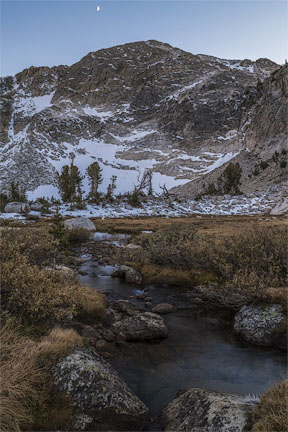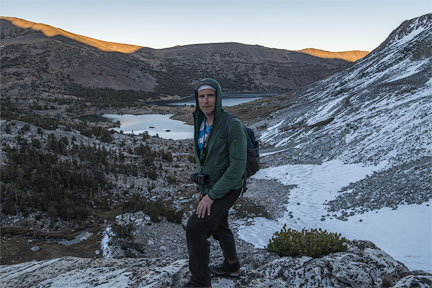Nikon D850: 'Focus shift shooting' Feature Most Important Feature since Live View; Focus Stacking is the ONLY Solution to Full Resolution Images
See my Nikon wish list and get Nikon D850 at B&H Photo.
See my growing review of the Nikon D850 in Advanced DSLR.
Automated focus stepping for focus stacking is the most important feature since Live View, at least from my point of view when shooting landscape or anything in which depth of field is a limiting factor.
My whole mindset is changing on how to shoot landscape. Before, it was always about balancing depth of field against the quality losses that comes with stopping down too far—diffraction. That’s a problem exacerbated by high resolution digital cameras like the Nikon D850, where f/8 shows dulling over f/5.6, from diffraction. Still, f/8 or f/9 is still acceptable if diffraction mitigating sharpening is used.
The ease of shooting appropriately-spaced raw images* with the Nikon D850 feature snapped my attention to focus stacking as an unprecedented new capability. Many an image I had resigned myself to “not working” as I previsualized it due to impossible depth of field limitations did not get shot. Those images are now “on the table”. Thus I see the Nikon D850 (focus stepping) feature as the most useful and significant feature in half a decade. At least for the type of shooting I do, but also for many other areas.
* The about $1999 Olympus E-M1 Mark II can auto-shoot raw images for focus stacking purposes with the nice bonus of showing progress as it shoots. See my brief review of the Olympus E-M1 Mark II, which I did before I was aware of this feature. It’s a superb camera, albeit with kitchen-sink menus as terrible as ever.
Never again am I going to suffer blurry foregrounds or backgrounds (unless I desire them for effect or there are conditional problems, like strong wind). The hyper realistic effect of having everything sharp near to far is a new genre IMO—really sharp, not the bogus depth of field passes-for-not-too-blurry stuff. Because depth of field of f/256 isn’t enough for plenty of scenes, particularly at close range and/or with longer focal length lenses.
Time saver, error avoider
Autofocus lenses proved to me yesterday that I can shoot a stacked scene 10 to 20 times faster with the Nikon D850 Focus shift shooting than manually once the number of required frames exceeds 3 or so. The more frames needed, the greater the advantage and the greater the likelihood of an error if manually focusing so many frames.
In some cases, I can shoot scenes that as a practical matter were nearly impossible to get right and/or literally impossible due to having less than a minute before the light changed. Thus the Nikon D850 feature is far more than a simple automation to replace manual effort. It is a HUGE time saver and an enabler of getting shots I could not get before.
It is so easy: focus on the closest desired point of sharpness, press the choice on the D850, let it do the work in the minimum amount of time with perfect focus spacing while I have a drink or take a piss or have a snack or scratch my ass—bonus advantages that reduce fatigue and make it more fun to shoot.
Autofocus vs manual focus lenses
Manual focus lenses like the Zeiss Milvus 25mm f/1.4 work great for focus stacking, as in the image below. And indeed for wide angles, often there is not much advantage to automation except that the greater the near-far range, the more important it is to have automation, for the reasons cited above.
So this calls into question manual vs autofocus lenses. While simple 2 or 3 frame stacks or single shots do matter that much especially with 25mm and wider lenses, the advantages of autofocus are now compelling for stacks with 4+ images and/or longer focal lengths, where the chance of error escalates. Shooting at 135mm is no problem with automation but a huge chore when focusing manually.
This image looks incredible on an iMac 5K at full 45 megapixel resolution. No choice of aperture or focus can begin to approach the total detail seen in this image.

NIKON D850 + Zeiss Milvus 25mm f/1.4
[low-res image for bot]

NIKON D850 + Zeiss Milvus 25mm f/1.4
[low-res image for bot]
























